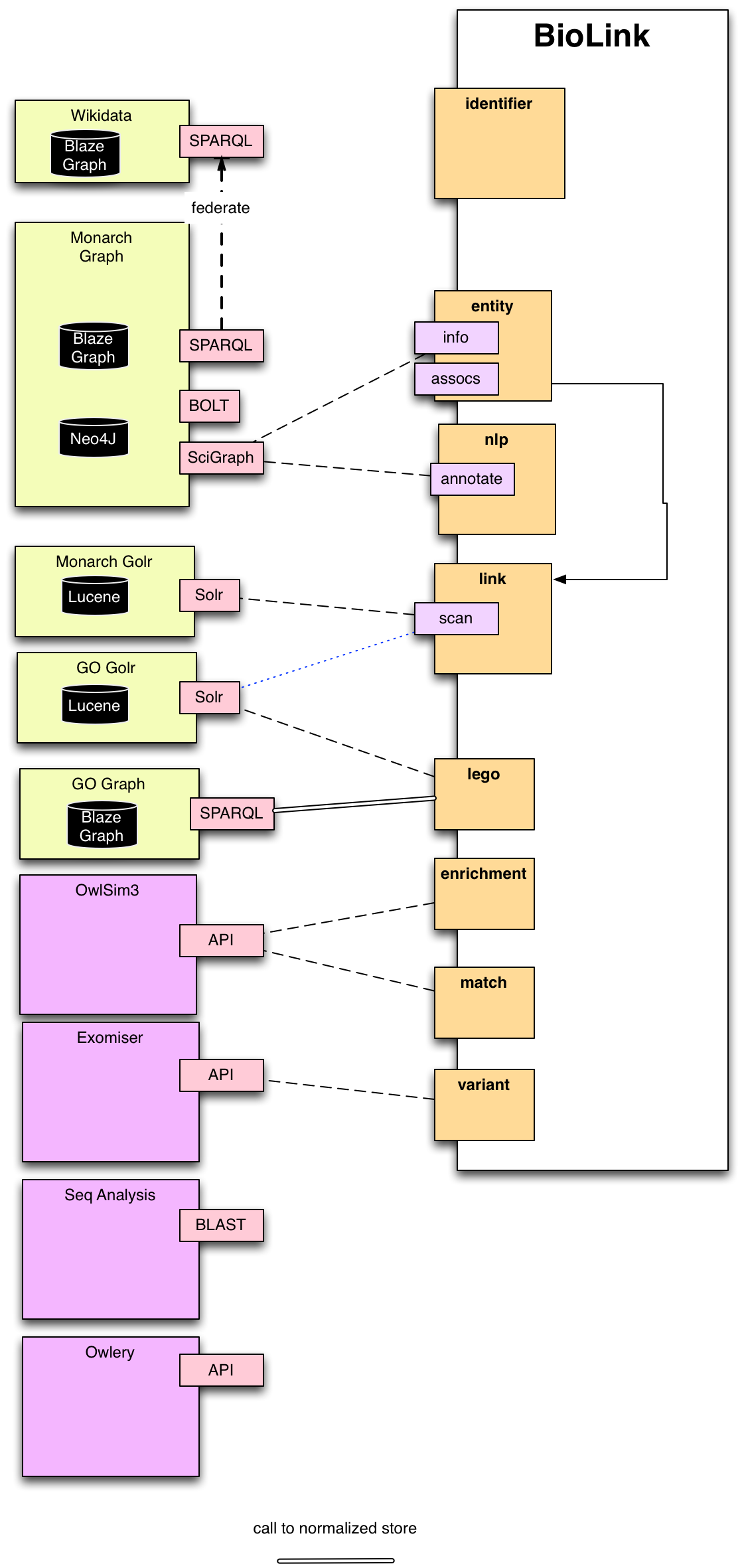An API providing access to information on biologically and biomedically relevant entities, and the relationships between them, including:
- genes, gene products, proteins
- diseases, phenotypes, traits and clinical measurements
- pathways, biological process
- substances: small molecules, drugs, chemical entities
- biological and molecular roles and activities
- genotypes, alleles, sequence variants; for plants, germplasms
- environmental contexts and exposures
- individual organisms: patients, cohorts, model organisms
- cell lines and cell types
- investigations: experiments, clinical trials and 'natural experiments'
- genomic features
- phylogenies
- metadata: publications, ontology terms, database metadata, prefixes
This repository provides an example server for the biolink API. This can be customized for other sources; or an entirely new implementation conforming to the API can be created.
This API is designed to be implemented or partially implemented via a variety of databases.
The Monarch instance provides access to a wide variety of aggregated data:
http://api.monarchinitiative.org/api/
Note this instance also provides access to GO annotations.
After checking out this repo:
./start-server.sh
This uses gunicorn and starts a server on 8888 by default. pyvenv is activated automatically.
Then look at:
For the swagger docs
To run in development mode:
pyvenv venv
source venv/bin/activate
pip install -r requirements.txt
export PYTHONPATH=.:$PYTHONPATH
python biolink/app.py
Docker requires a config directory with an ontobio config file named ontobio-config.yaml and a biolink config file named biolink-config.yaml
For testing purposes these can be copied from the defaults, eg
mkdir config
cp conf/config.yaml config/biolink-config.yaml
cp venv/lib/python3.7/site-packages/ontobio/config.yaml config/ontobio-config.yaml
docker build -t biolink-api .
docker run -p 5000:5000 -v `pwd`/config:/config biolink-api start-server -k gevent --worker-connections 5 --bind 0.0.0.0:5000 wsgi:app
See the swagger UI for more details. Click on 'model' under any of the routes.
The primary abstraction used in the modeling is the distinction between named objects and associations.
- Named objects include things like genes, drugs, pathways.
- specific types subclass from a more generic type
- Associations connect these, usually via some evidence and provenance information.
- Some associations can be direct, others are indirect or inferred
- Where associations are inferred, these is a graph of evidence tracing the primary associations
These examples are compiled from the behave tests
This is the repo:
https://github.com/biolink/biolink-api/
You can run a server instance locally with very little effort (less than one minute), see below:
This server implementation is primarily a flask-rest wrapper onto the ontobio package.
This API will wrap and integrate number of different more modular APIs and database engines or analysis services. The idea is that the API implementation will do the right thing - for example, using Solr for searches but injecting results with fast in-memory traversal of ontology graphs.
A service implementing the Biolink API can be accessed through standard http libraries. We also provide client language bindings, generated through swagger-codegen. For more information, see:
This is intended as a think wrapper layer, integrating existing services, as shown here:
